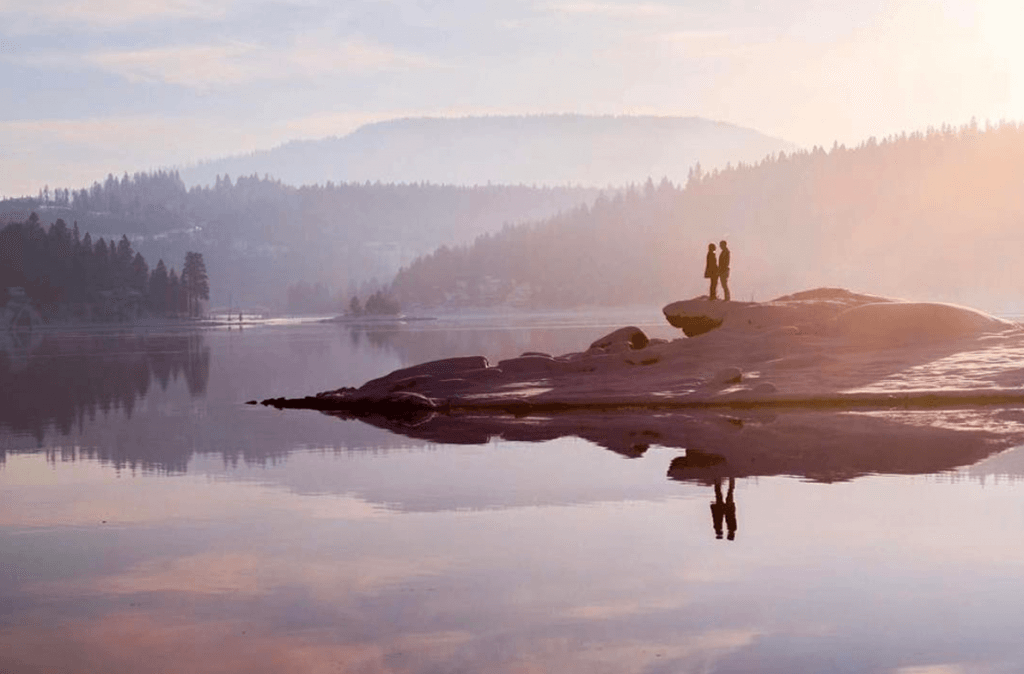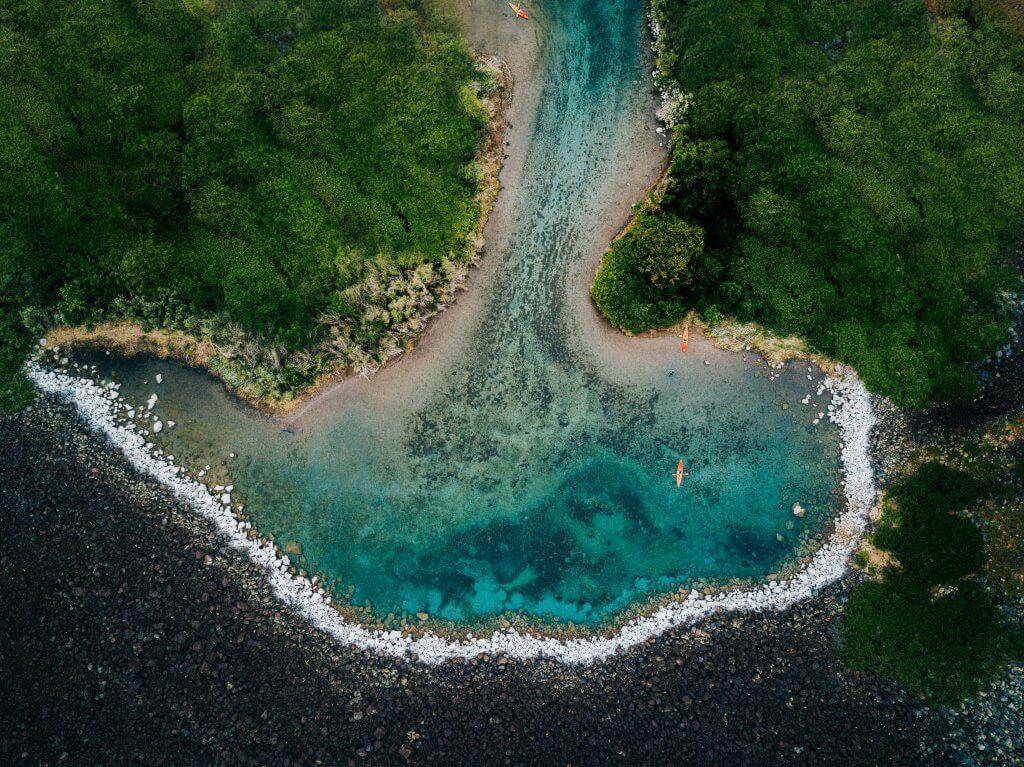Craters of the Moon National Monument and Preserve is composed of three young lava fields that spread across 500,000 acres of wild country on the Snake River Plain. Over the last 15,000 years, the lava erupted through a series of deep cracks, known collectively as the Great Rift
How does one hike across a 52-mile-long volcano? On April 11, the six members of the 2014 Great Rift Expedition took up the challenge to find passage through this ocean of lava. During the next seven days they endured many hardships but also experienced the joy of discovery.
Expedition members quickly learned why very few folks have willingly traversed this route. Waves of rough stone ripped at their boots, blistered feet, and slowed progress. The wind blew incessantly and water, always a concern in this parched country, was an especially scarce commodity due to a dry winter. Fortunately, there was just enough ice and snow hidden in deep cracks and caves to sustain the group.
Along the way, the group made many observations and discoveries. They marked the location of more than 15 newly discovered caves and observed a wide variety of flora and fauna. Although early in the season, 32 different wildflower species were observed blooming—a splash of color across the dark lava. Healthy herds of elk and pronghorn and a variety of bird species, including great horned owl, sage grouse and numerous song birds, were observed. Especially impressive were the kipukas, vegetated islands of older lava rock surrounded by younger lava, which serve as a refuge for native plants and animals. These areas also provided refuge for the weary “rifters” as they sought out a place to rest in the evenings.
When planning your visit to Craters of the Moon, read this article written by David R. Clark, the monument’s now-retired Chief of Interpretation, in which he offers recommendations on how to enjoy the park at its best.
Fifty years ago, in a nearly unanimous vote, Congress enacted landmark legislation that permanently protected some of the most undisturbed places in America. The Wilderness Act identified wilderness as “an area where the earth and its community of life are untrammeled by man, where man himself is a visitor who does not remain.” This definition accurately describes a large portion of Craters of the Moon, where, in 1970, Congress designated the first wilderness area in any national park unit. Expansion of the Monument in 2000 included another 495,000 acres of adjoining lands already determined by the Bureau of Land Management to be worthy of wilderness designation.
These Wilderness Study Areas remain undeveloped and are managed to ensure they will continue to qualify as wilderness while Congress considers designation. Due to the wilderness character of this landscape, visitors often feel as though they are the first ever to experience it. However, the group found several historic and prehistoric archeological sites, including ancient wind shelters and even the foundations of structures built in more modern times along the margins of the flows. Projectile points, flakes of obsidian and well-worn trails across cinder slopes provided additional evidence that this group was not the first to pass this way. After all, the expedition was following in the footsteps of Robert Limbert, the great Idaho explorer. He summed up the experience of hiking the Great Rift in 1920 with a quote to which all members of the 2014 Expedition can surely relate:
“To stand and gaze with amazement mingled with fear at things of which the world knows nothing…passing alone through volcanic craters…crossing miles of folds of rock similar to the folds of a huge blanket was indeed an experience never to be forgotten.”
View photos of the expedition and a map of the route.
There’s More Than Meets the Eye at Craters of the Moon
By Ted Stout, Chief of Interpretation and Education at Craters of the Moon National Monument and Preserve
Trip Tips
See more details in this article by David R. Clark, retired Chief of Interpretation.
- Timing is everything. Visit the monument in the morning or evening, when the light is softer. You’ll be better able to see the many colors in the lava—chocolate-brown, reds, blues, silvers, and greens. The gentler light also lets you notice the abundance of brush and colorful wildflowers, moss, and lichen. If you walk the trails before 10 a.m. or near dusk, you’re also likely to catch a glimpse of the wildlife that calls this environment home: muledeer, marmots, and hundreds of species of birds.
- Don’t limit your visit to the height of summer. Spring arrives in late June and brings with it colorful flowers everywhere you turn, from blue larkspur to red Indian paintbrush to orange and yellow prickly pear cactus. In fall, the afternoons are pleasantly warm and the light takes on a soft yellow-orange hue—creating a peaceful, comfortable atmosphere perfect for hiking and taking photos.
- Plan to join a naturalist-led program or walk to get an up-close look at the wonders of this landscape. In summer, there’s a walk or program almost daily. Kids will love hikes into lava tubes; the popular Buffalo Caves hike leads to a little-used area of the monument and, over a course of two miles, visits nearly every type of volcanic activity and vegetative type here. At the halfway point, you’ll go into Buffalo Cave, a lava tube, for an underground tour. On Saturdays in summer, rangers present walks on selected topics like wildflowers, birds, and geology.
- You can camp at the monument’s Lava Flow Campground March–October. The 51 sites (first-come, first-served, no reservations accepted) have picnic tables and charcoal grills. They’re also largely unshaded—so early summer and fall might be the most enjoyable time to camp here.
Ted Stout is a guest contributor.
Published on March 6, 2015


